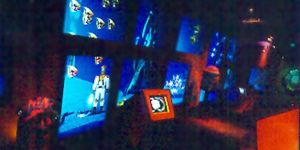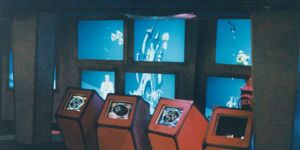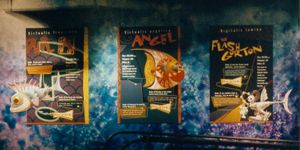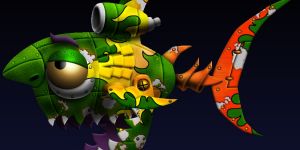Brian Knep
The Virtual FishTank, at the Museum of Science, Boston, demonstrates and explains emergent behavior.
Five species of fish swim freely between twelve large, rear-projected screens. Visitors can change the rules that each species of fish follows, and then watch the schooling patterns that emerge. For example, the fish have a rule that tells them to try to swim in the same direction as their neighbors. Turning off this rule causes the fish to swarm rather than school.
Visitors can also build their own fish, select the rules that it follows, release it into the big tank, and watch how it behaves and responds. As the visitors change their fish's rules, its appearance also changes. For example, making a fish very hungry will give it a large and fierce mouth.
Three other stations allow the visitors to change the tank environment. A big wheel releases food into the tank, a lever controls the amount of air given to a diver, and a digital camera picks up visitors' movements, allowing the fish to respond to waving motions.
Conceived of by Mitch Resnik at the MIT Media Lab, the Virtual Fishtank was designed and implemented by Nearlife, where I was a principal. I was responsible for the system architecture and provided creative and technical direction as part of a team.
For more, see our SIGGRAPH paper.




